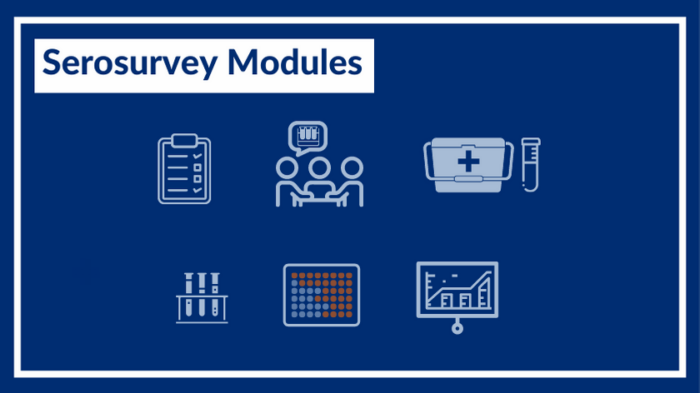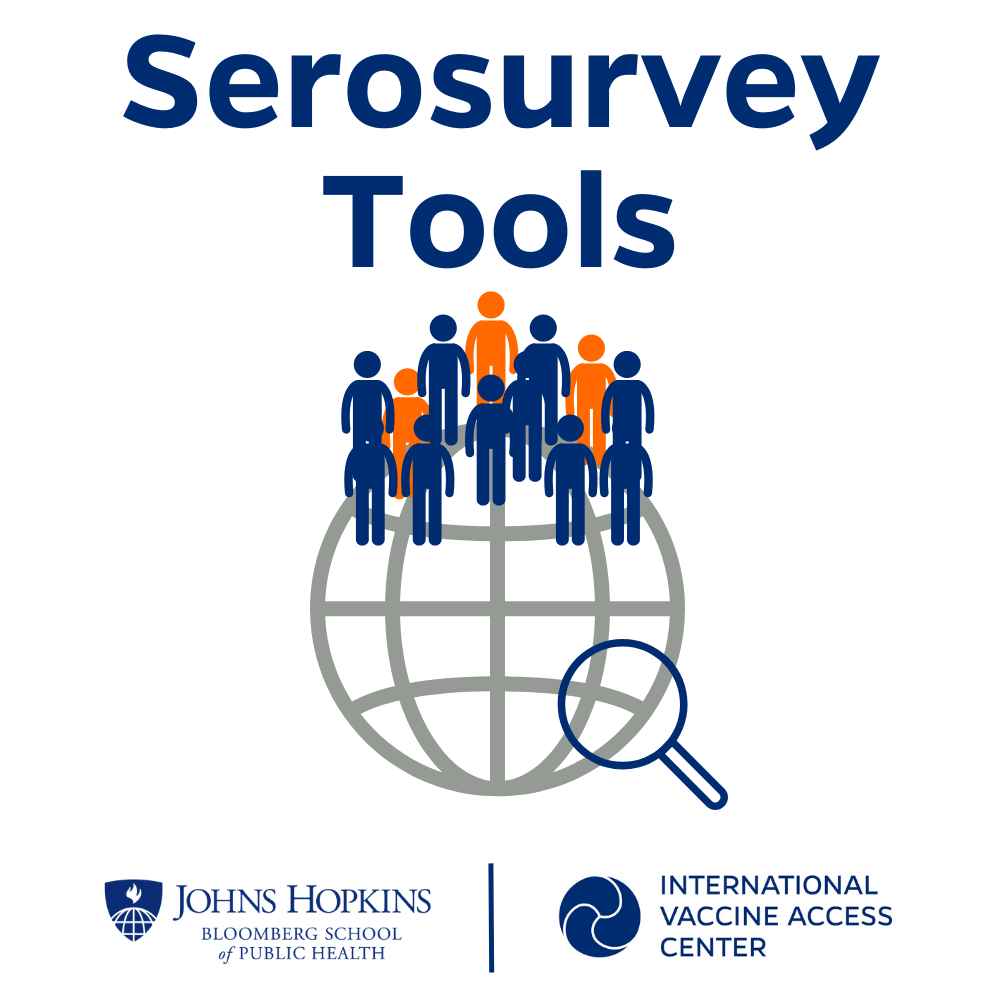
- Home
- Serosurvey modules
This resource provides guidance to individuals designing and conducting serosurveys, or studies that test bodily fluids to estimate what part of the population has been vaccinated against or infected with a disease—and how many people remain susceptible. Serosurveys can:
- Involve collecting and testing testing blood or oral fluid specimens specimens to measure the amount of antigen-specific antibodies in a group of people,
- Reveal what part of the population has been exposed to an infectious disease or been protected from disease by immunizations, and
- Estimate the level of population immunity as well as gaps in immunity, such as groups of people who have not been vaccinated or previously exposed.
This module defines serosurveys and describes the uses serosurveys.
This module describes the steps are common to the design of any type of survey, including:
- Defining the survey objectives
- Identifying the target population
- Determining the survey design
- Choosing the specimen type
This module describes the procedures for collecting blood specimens in the community and transporting specimens to the laboratory.
This module describes the process of testing specimens in the laboratory and key considerations for seroprevalence studies.
This module describes the process of monitoring quality assurance of assay testing and interpreting results from serosurveys.
This module describes activities occurring from the time the specimens reach the laboratory following collection to the point of testing, including specimen receipt, processing, storage, and shipment.
This module describes sampling residual blood specimens from biorepositories or health facilities to be used for serosurveys.
